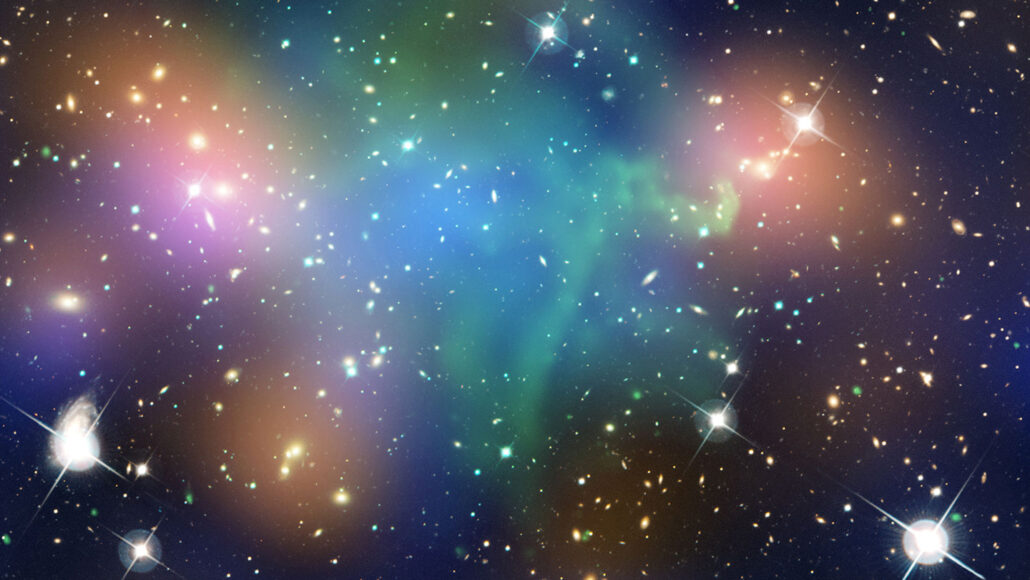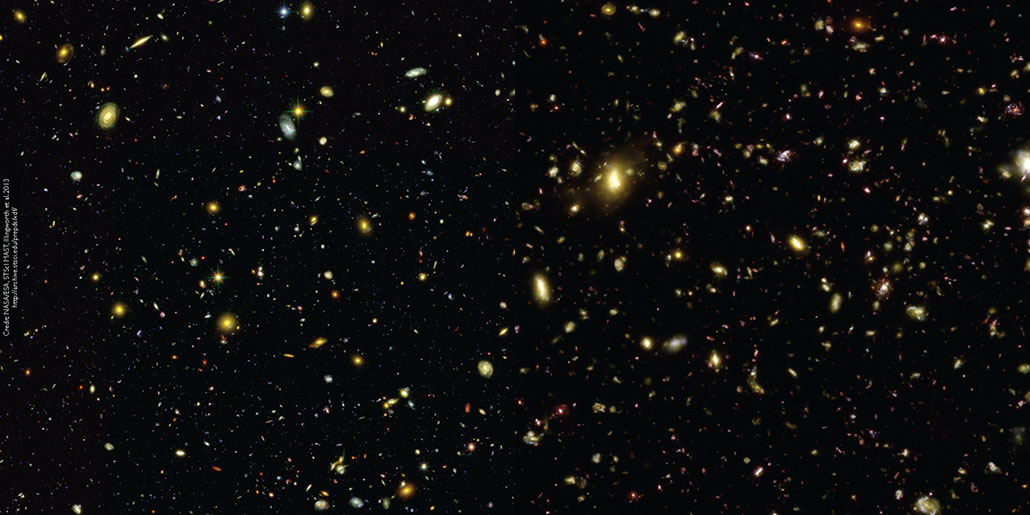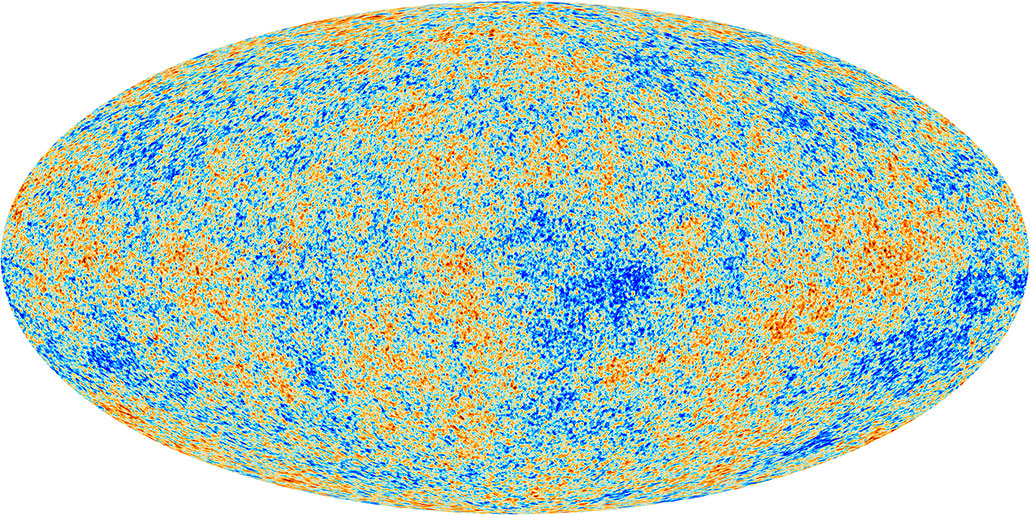Our feverish universe is getting hotter every day
Today the cosmos is 2 million degrees Celsius, 10 times hotter than it used to be

Hot gas in a galaxy cluster appears green in this image of the Abell 520 cluster taken by many telescopes. The cluster is about 2.4 billion light-years away. A new study shows hot gas like this has been getting hotter as the universe ages.
NASA, ESA, CFHT, CXO, M.J. Jee/University of California Davis, A. Mahdavi/San Francisco State University
Global warming, meet cosmic warming.
Today, the universe is 10 times warmer than it was 10 billion years ago. Back then, the average temperature of deep space was around 200,000º Celsius (360,000º Fahrenheit). Now it’s roughly 2 million ºC (3.6 million ºF).
“This is the first time we can confirm the precise value of the temperature of the universe and how it evolves with time,” says Yi-Kuan Chiang. He is an astrophysicist at Ohio State University in Columbus. He led a research team that took the universe’s temperature. It shared the new findings in the October 10 Astrophysical Journal.
Tracking temps helps astronomers understand how the universe built huge structures, explains Chiang. These include gatherings of star-rich galaxies, known as clusters. Those clusters can contain hundreds of galaxies spread across millions of light-years.
As clusters assemble, they release energy. Gravity turns into heat, which warms up the surrounding gas. By measuring how the temperature of this gas has changed over time, says Chiang, astronomers can “probe the progress” as clusters come together.
Cosmic warming not a surprise
The new temperature measurement “jibes really well” with what astronomers expected, says Martine Lokken. She is an astrophysicist at the University of Toronto in Canada. She uses computer models and telescope data to understand how gas and galaxies link up across the universe to form a “cosmic web.”
In these models, researchers like Lokken create virtual baby universes. The computer simulates the physics. Then this computer program lets the universes grow up on their own. From this, scientists see how well those virtual universes match the real thing.
Today, these models do a good job at recreating the view through telescopes, says Lokken. In particular, “we do see that you get this continual heating of gas as galaxies fall into these really massive, dense regions of the cosmic web.”

The new temperature measurements give astronomers the data to confirm those simulations.
Two million degrees sounds pretty hot. But it wouldn’t feel like it if you were in this gas and you took off your spacesuit. (Pro tip: Don’t disrobe in space. It’s a bad idea.)
“How we as humans experience heat on Earth is really by the transfer of thermal energy when we touch something,” Lokken explains. A hot stovetop feels hot because it has lots of molecules zipping around. Those molecules keep bumping into your hand. With each bump, they transfer heat from the stove to you.
But in space, there just aren’t that many molecules. Even in the gas near a cluster, the molecules are very far apart. You wouldn’t know you were surrounded by gas. It wouldn’t feel hot. It would feel like, well, nothing at all.
How to take the universe’s temperature
Taking the temperature of gas that existed long ago isn’t easy. But telescopes are time machines. When astronomers look far away, they’re also looking back in time.
Imagine a galaxy that sits 1 billion light-years from Earth. The light from that galaxy took 1 billion years to reach us. When we look at that galaxy, we’re not seeing it the way it is now. We’re seeing as it was 1 billion years ago.
That’s why Chiang and his colleagues went looking for gas near galaxies at many distances from Earth. Some were close, some were billions of light-years away.
To take the temperature of the gas, the scientists got help from very ancient light. This light is called the cosmic microwave background. It’s a feeble glow from all directions, leftover from not too long after the Big Bang. (The Big Bang is what started the universe, some 13.8 billion years ago.)

As light travels through space, some of it runs into gas around galaxy clusters. When it does, it picks up energy from electrons whizzing around within that gas. The electrons boost the frequency of the light just a little bit. How much the frequency changes depends on how hot the gas is.
Chiang’s team looked at old data from telescopes in space that mapped this background light. They searched for patches where the frequency got bumped up a bit. That highlighted locations of hot gas in the sky.
They then matched those findings to known distances to galaxy clusters using a ground-based telescope. Putting all this together let them figure out the temperatures of gas clouds at different distances — and at many points in time.
“We were surprised that it worked as expected,” Chiang says.
But Chiang isn’t done. He and his team are now looking at another type of light called the cosmic infrared background. This dull glow fills the universe with infrared light. It comes from warm dust in galaxies.
When measuring the temperature of space, the team had to be careful to not let this light mess up its work. But this light, too, has a tale to tell, says Chiang. “The cosmic infrared background has a story about galaxy formation.”







